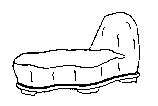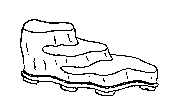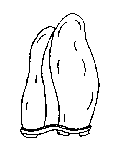|
WHAT
IS A SUISEKI?
By Frank English
|
Suiseki
(Sui=water, Seki=stone) is the Japanese name for those serenely attractive
"Viewing Stones" frequently shown
in conjunction with miniature trees at Bonsai exhibits. Not just accent pieces
for the Bonsai, Suiseki are themselves
examples of a classic oriental art form with centuries old standards for judging
and display.
Basically the art of Suiseki
involves the collection, preparation and appreciation of certain unaltered naturally
formed stones. These stones
are found in mountain streams, on windblown deserts, along ocean beaches -
anywhere the forces of time
and nature may have temporarily deposited them. They are chosen from among the
countless stones examined
for their perceived resemblance to familiar scenes in nature or to objects closely
associated with nature.
There are three main category
groupings in Suiseki, the first and most popular being SCENIC LANDSCAPE
STONES. These may evoke
impressions of distant mountains, islands, waterfalls, caves, river-formed terraces,
lakes and other examples
of natural topography.
OBJECT STONES constitute
another primary grouping. Included are stones resembling man-made objects such
as boats, bridges and old
Japanese thatched huts. Also prized are animal-shaped stones, bird, stones,
and stones that resemble
fish, insects and human figures.
PATTERN STONES make up
the third category. They are valued for their unique surface patterns resulting
from variations in
color, unusual texture and contrasting mineral inclusions. Best known of this
group are the beautiful Japanese
chrysanthemum stones. Others include tiger-striped stones, celestial (sun/moon/star)
patterned stones and
abstract pattern stones.
To the Japanese collector
the essence of Suiseki is more than just representational; it is also spiritual.
Quoting from a pamphlet
of the San Francisco Suiseki Kai, "The contemplation of a stones as a symbol
of nature relaxes the
mind from pressures of a complex daily life and allows a person to retain his
sense of values. The importance of
life in its simplest form is reflected through the beauty, strength and character
of the stone."




